Humid climates aren’t for everyone, but they certainly do lend themselves to good health and longevity. It’s no wonder people move to these climates in retirement. Humidity keeps you younger for longer. It’s also very good for certain plants. If you’ve relocated to a humid gardening climate from a drier one, you might struggle to cultivate the same plants.
Gardening in raised beds can be helpful in humid climates, as it brings your plants up off of the ground. Here, they can get more air circulation. Certain plants will struggle with fungal disease in humid climates, so knowing which ones to plant is important. Here are 19 plants that will thrive in your raised beds in a humid climate.
Salvia
Violet Queen Salvia Seeds
Amaranth

Love-Lies-Bleeding Amaranth Seeds
Marigolds
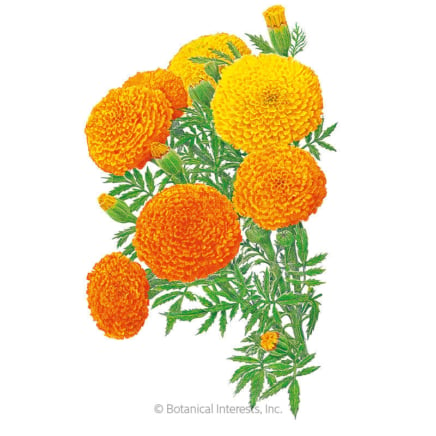
Crackerjack African Marigold Seeds
Tickseed
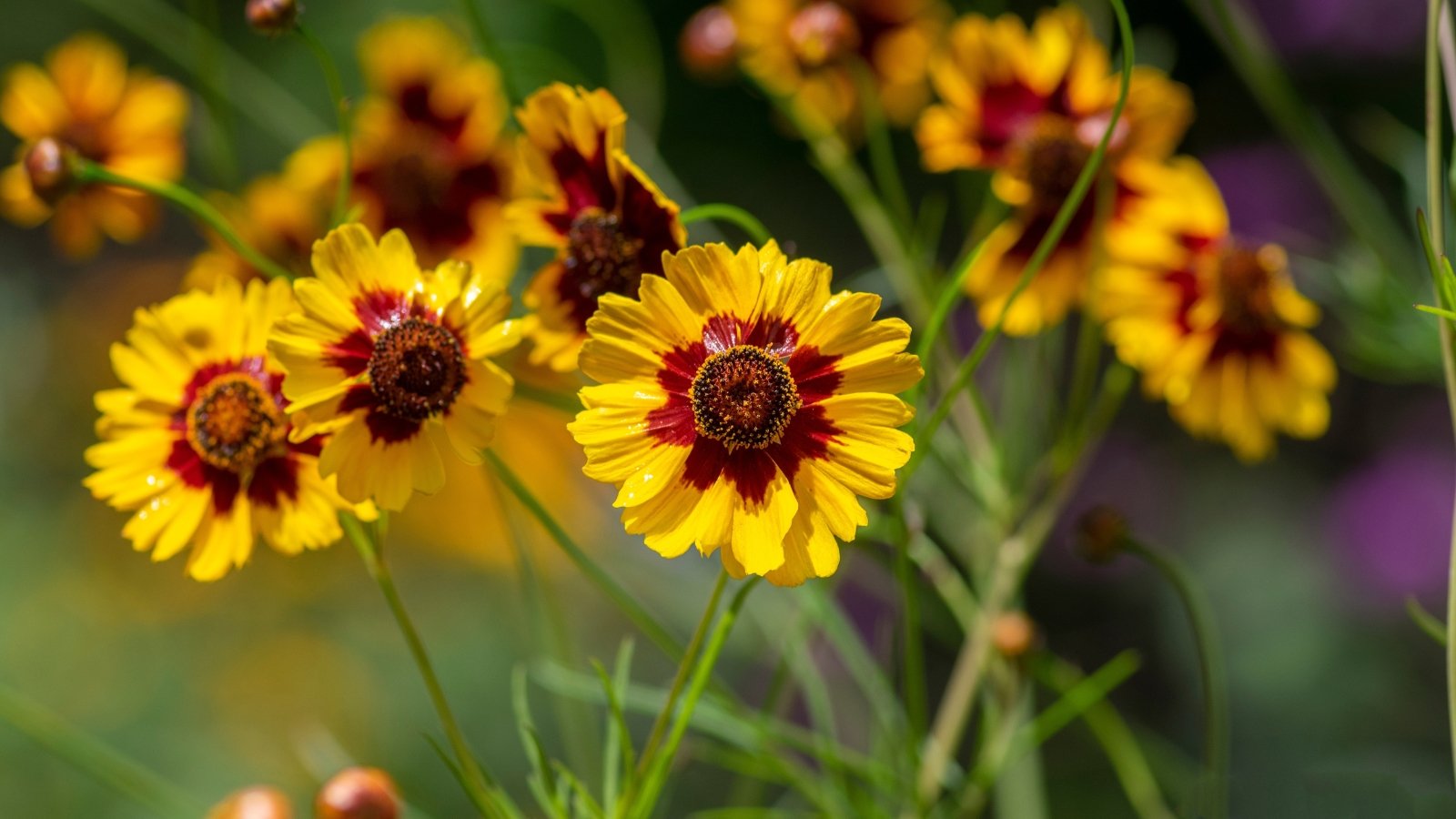
Tickseed is one of my favorite raised bed flowers. It’s incredibly hardy in my climate, which is very humid. This sweet flowering plant has slender, graceful stems and basal leaves that are bright green and strap-like. The flowers dance and bob atop the foliage in the slightest breeze. They can grow fairly tall as they mature, and they will fill a space nicely in their second year.
Here in Zone 9, these are frost-proof. They stay green all year, though they stop producing flowers as the days get shorter. In the spring, they burst into color, making them one of the earlier flowers in the new season. They come in a variety of warm shades, and they are exceptionally easy to care for. They prefer very humid climates.
Culver’s Root
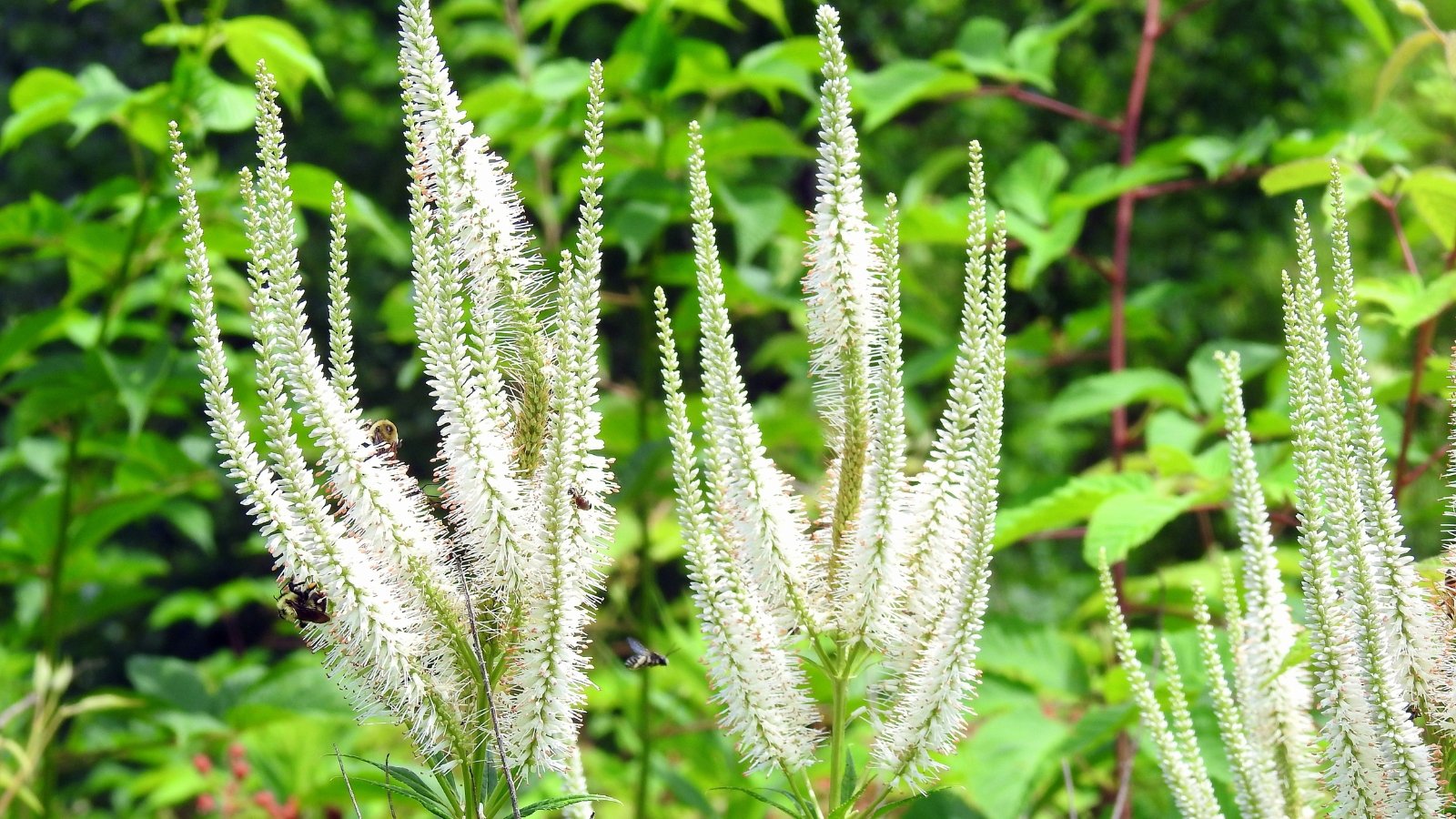
This fun perennial bears a strong resemblance to Veronica, but it can grow taller, up to seven feet! The smooth stems with whirling leaves grow in odd-numbered groups of three to seven. Atop these tall stems are delicate flower spikes covered in tiny white flowers. It makes a great ornamental, adding a vertical element to the raised bed.
Culver’s root is very tolerant of humidity. In cooler climates, grow this plant in full sun. In very warm and humid climates, give your plants some afternoon shade. In addition to moisture in the air, this plant prefers moist soil, as well. The improved drainage of a raised bed helps to maintain the proper moisture levels and drainage for this plant.
Anise Hyssop
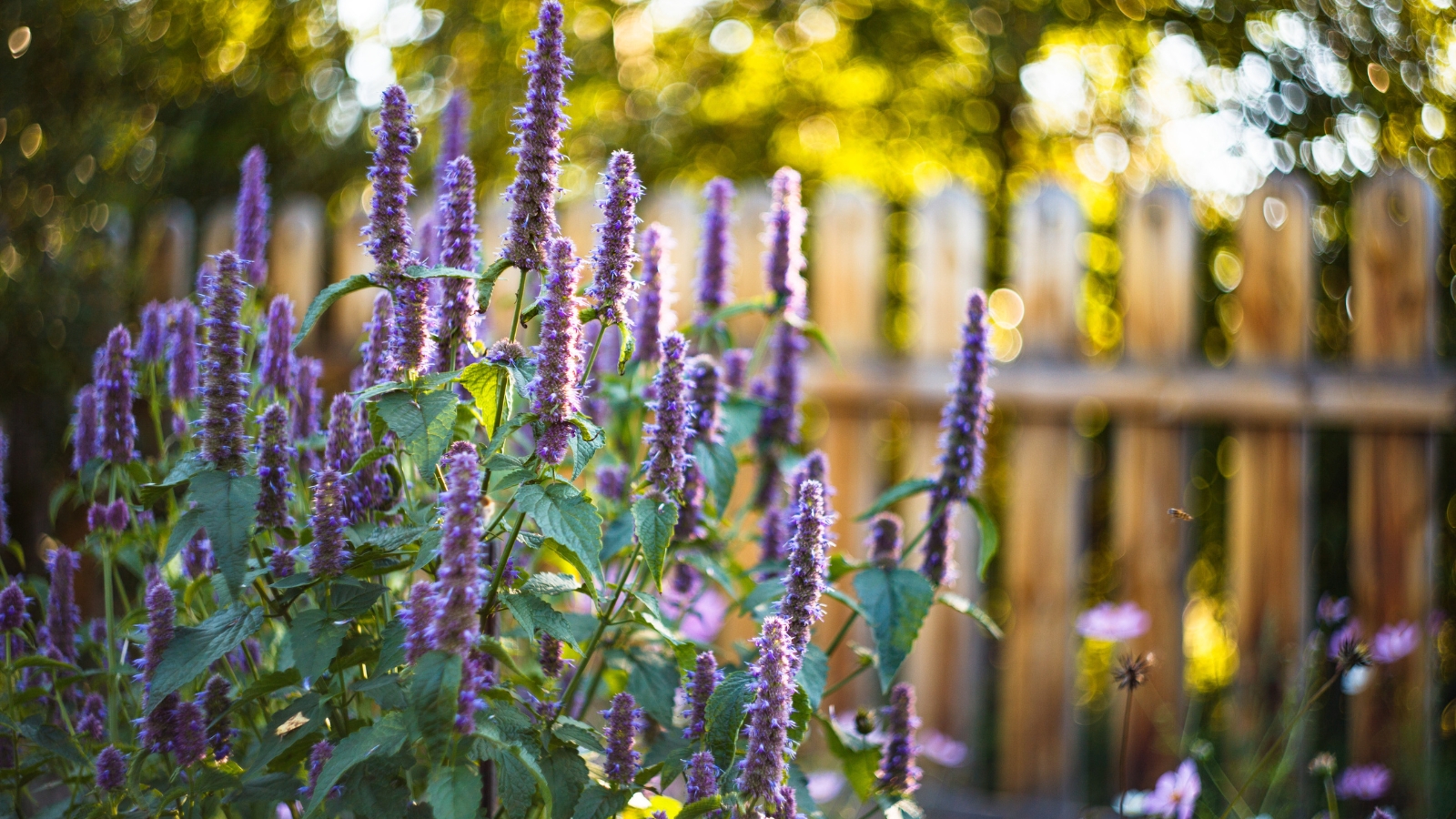
This is a plant I will always grow in my raised beds. I’m an avid pollinator-lover, gardener, and beekeeper, so anything that the bees are attracted to stays in my garden. Anise hyssop is an attractive plant with aromatic leaves and tall spikes of tiny purple flowers. It’s incredibly easy to grow and will be happy in full sun or partial shade.
While this plant doesn’t mind humidity, it is a good idea to keep the interior thinned out to avoid fungus. Don’t crowd it much. It likes to sway in the breeze. Anise hyssop is drought tolerant but won’t be unhappy if you keep it watered. Just avoid watering at night, and make sure your soil drains well.
Sweet Potatoes
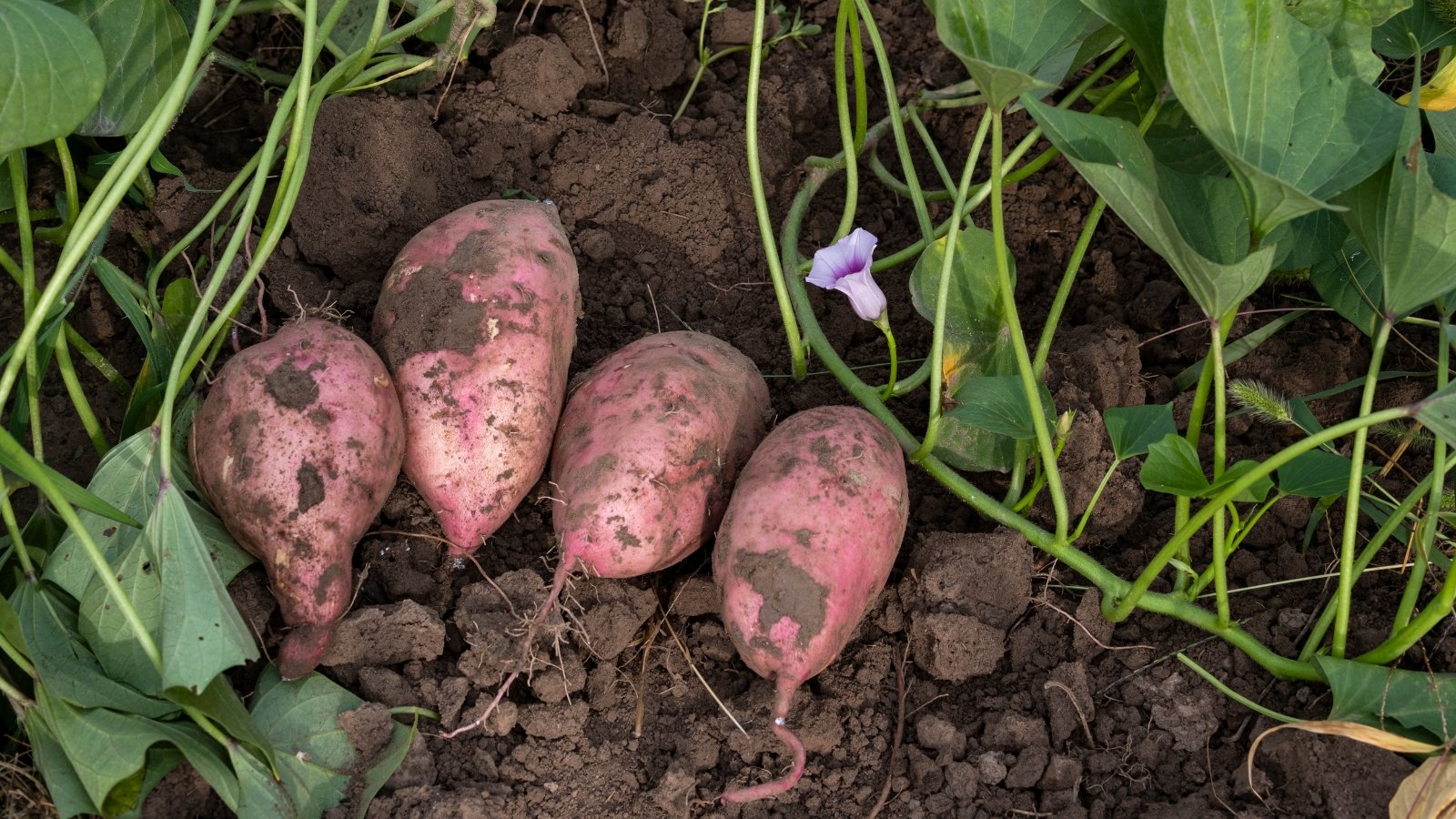
If it’s vegetables that you want to grow in your beds, sweet potatoes are a great crop for humid climates. Not to mention, their vines are really lovely. Vines come in purple or green and produce pretty purple flowers. Planting potatoes in raised beds makes them a cinch to harvest. They need loose, rich soil to perform their best.
Sweet potatoes are moisture-loving plants. Keep them watered, particularly in times of little rain. Mix some extended-release fertilizer into your bed before planting these tasty vegetables.
Amaranth
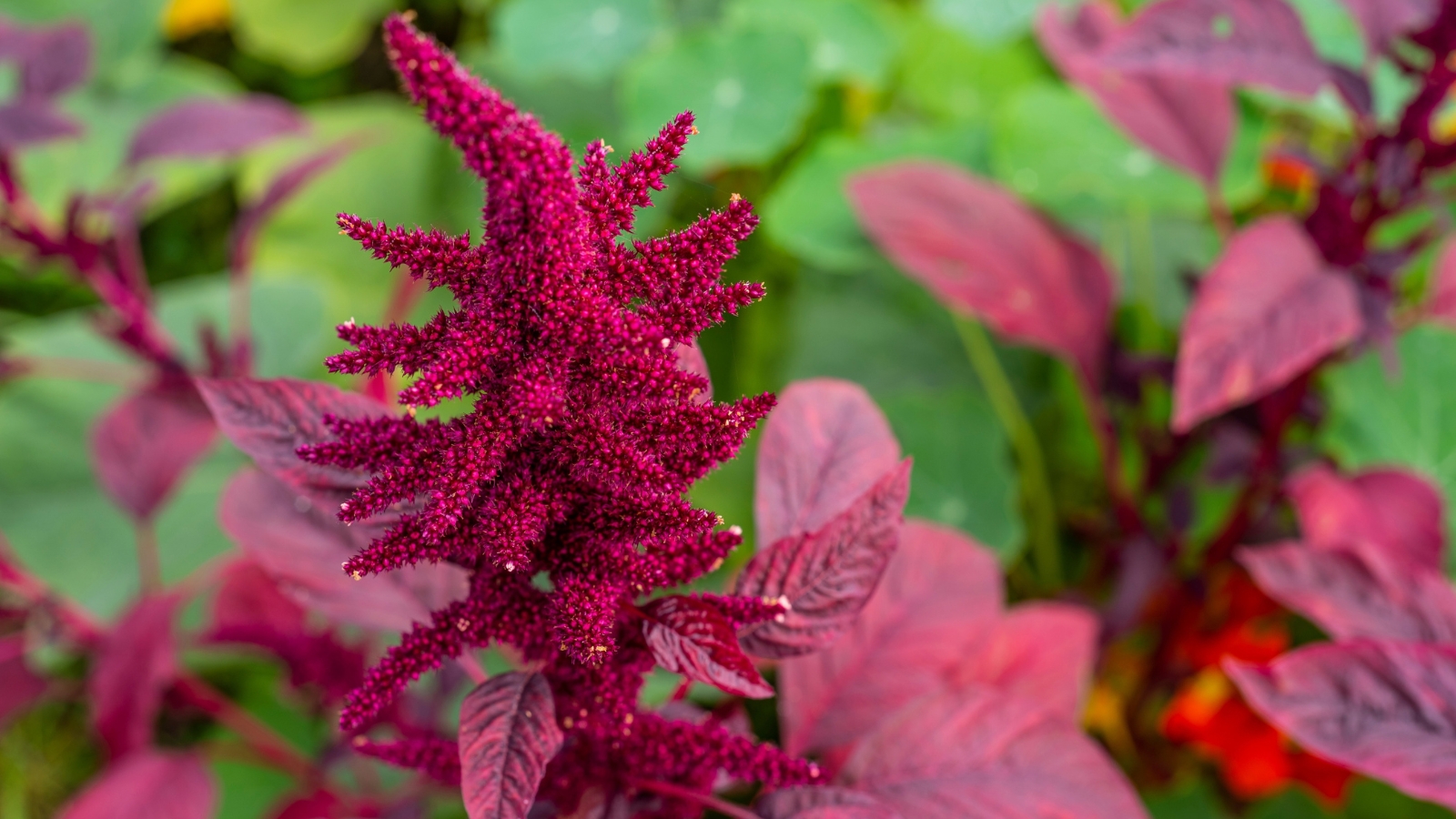
Amaranth is a fascinating and beautiful plant that is completely edible, too! Depending on the variety, this plant likes anywhere from 40-75% humidity. The leaves will dry out if the air is dry. This plant is often used as a grain, and the leaves are very attractive and tasty, eaten raw or cooked.
I have found amaranth to be a very heavy feeder. It should stand alone in a raised bed; otherwise, it’s likely to steal nutrients from other plants nearby. It can be pushy, but it’s spectacular looking, and the flowers have an interesting texture. I love the ‘Love Lies Bleeding’ variety for its fun, draping flowers.
Salvia
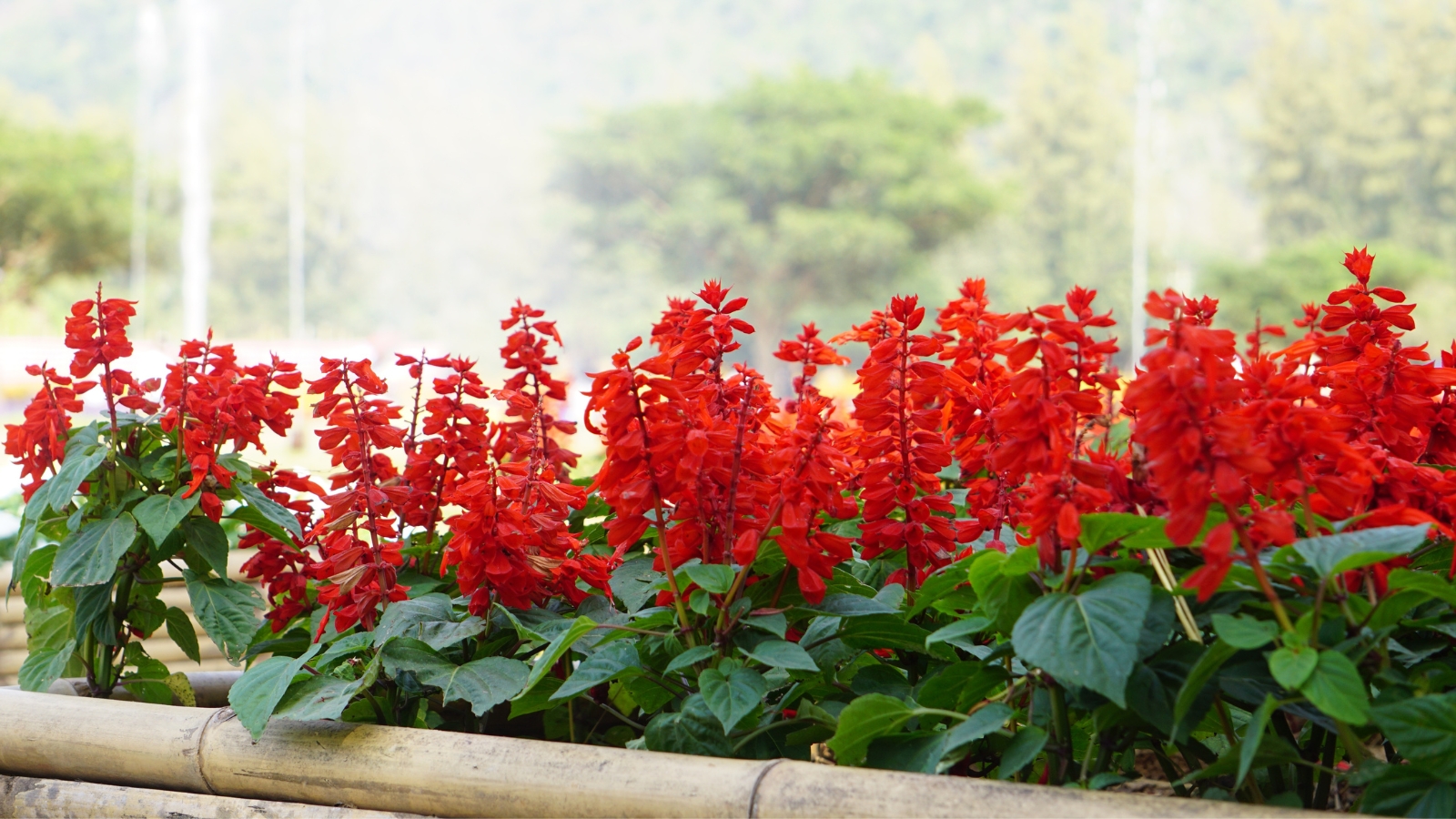
Salvia is a wonderful flowering plant that pollinators adore. It grows quickly and provides a lot of color in the garden. It can also be a bit pushy in the ground, so it makes a wonderful raised bed plant. It is better contained this way.
Salvia comes in several colors, including purple, red, and blue. The tubular flowers are very attractive to hummingbirds. Although they are native to the hot, dry climate of the Mediterranean region, they tolerate humidity very well. I live in a very humid climate and never have any issues with salvia, it is tough as nails.
Zinnias
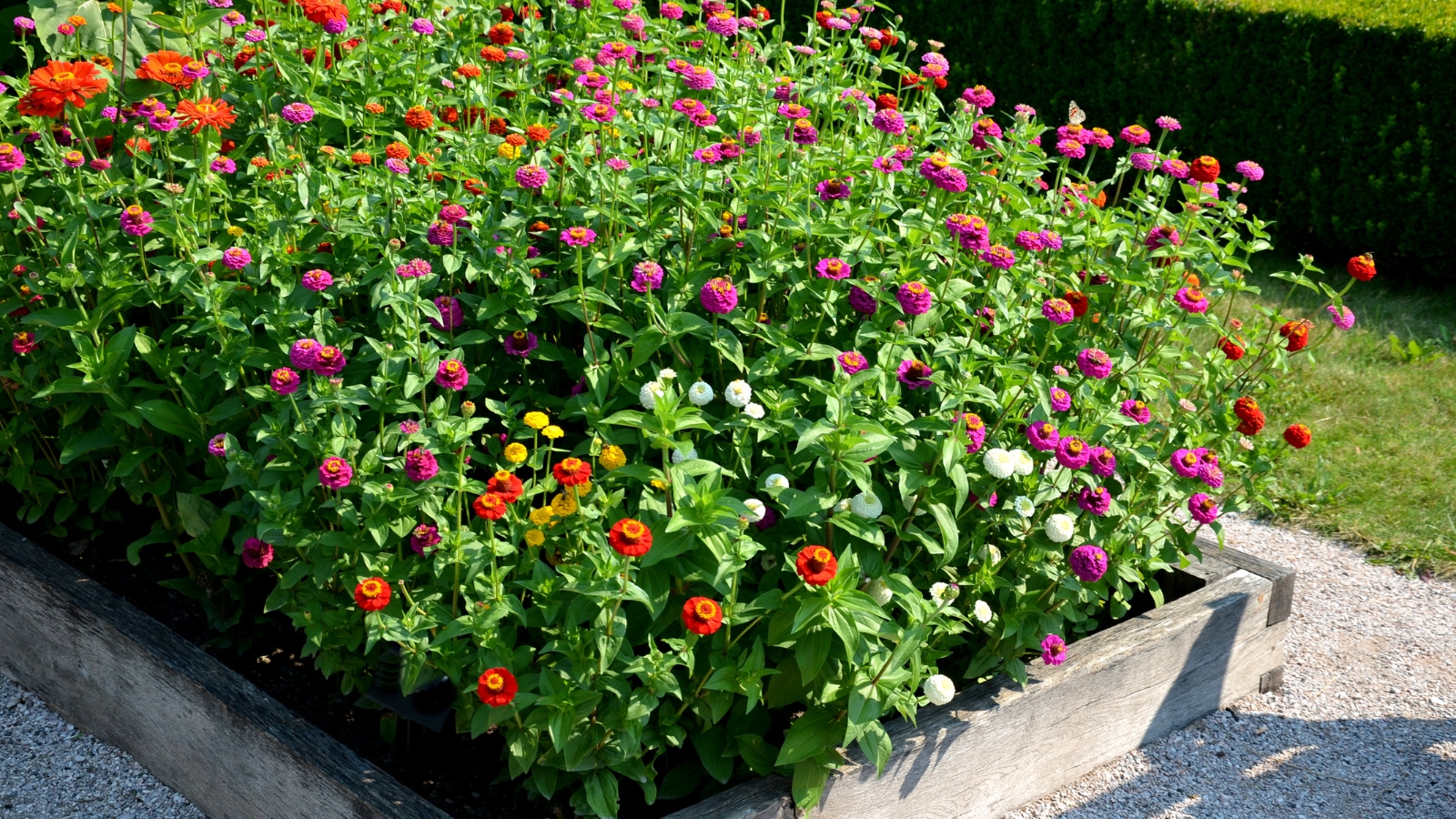
If you want a colorful display that lasts all summer and until the first frost, zinnias are a winner. They grow so quickly, blooming just 60 days after planting. They never back down from hot temperatures. Even in the dead of summer, when the thermometer is passing 100°F (38°C), my zinnias still bloom. However, they do appreciate more water.
Zinnias can be susceptible to powdery mildew. Keep the stems clean at the base and allow room for air to circulate to avoid fungal issues. They bloom best with some humidity. They make wonderful cut flowers, and the more you cut, the more they will bloom.
Purple Prince
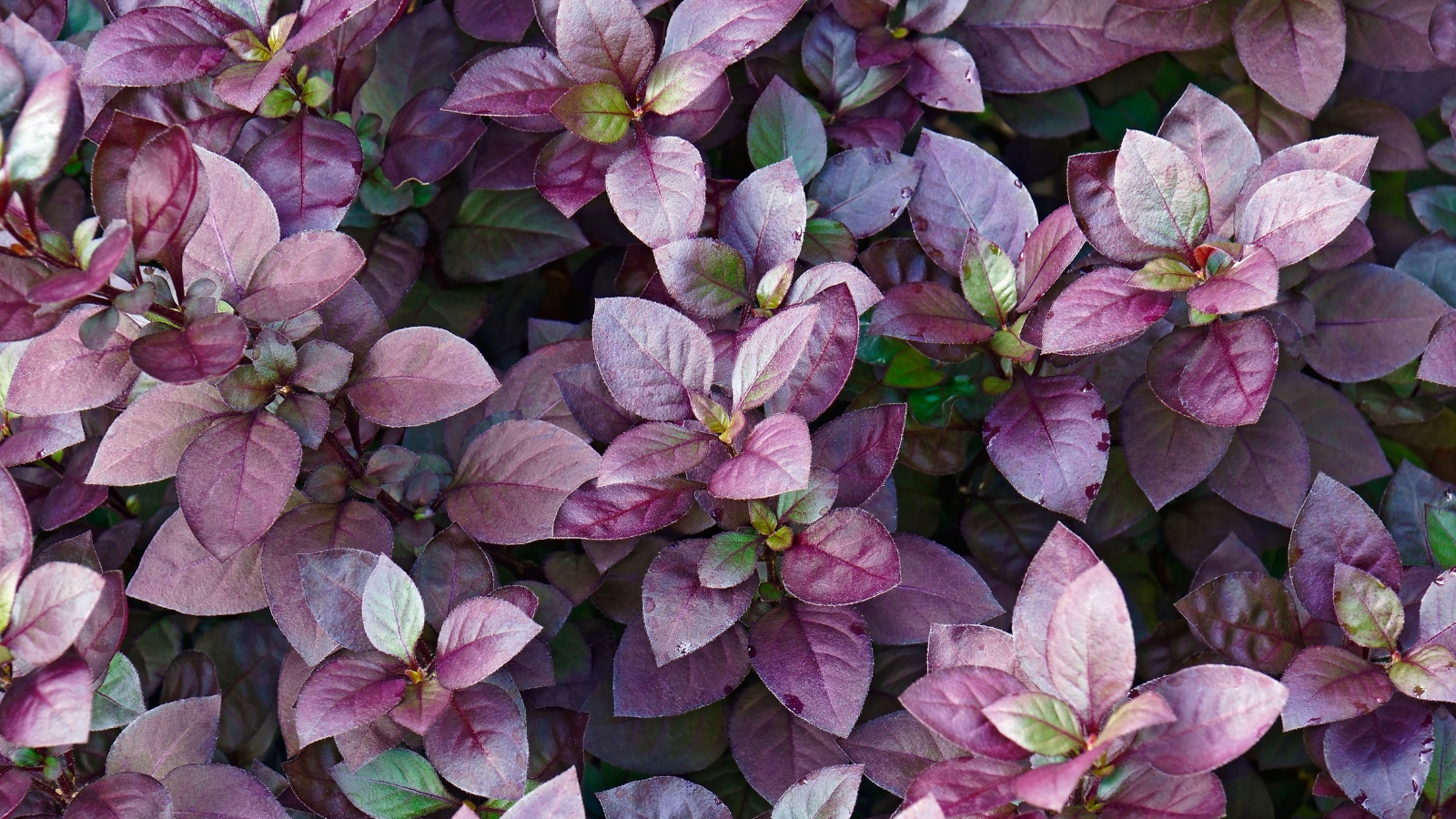
Purple prince plant is a wonderful and versatile plant that is happiest in at least 80% humidity. A tropical plant, this one is a perennial in Zones 9-11 and an annual elsewhere. You can plant this one in most exposure conditions, from full sun to nearly full shade, although some shade in the afternoon is best. It spreads wider than it grows and fills in nicely between taller plants.
This plant prefers compost-rich soil with good drainage. It stands up well to the elements, braving heat, rain, drought, and humidity like a champion. You will love how low-maintenance this plant is! Mature leaves are shades of purple and red, with new leaves coming green.
Marigolds
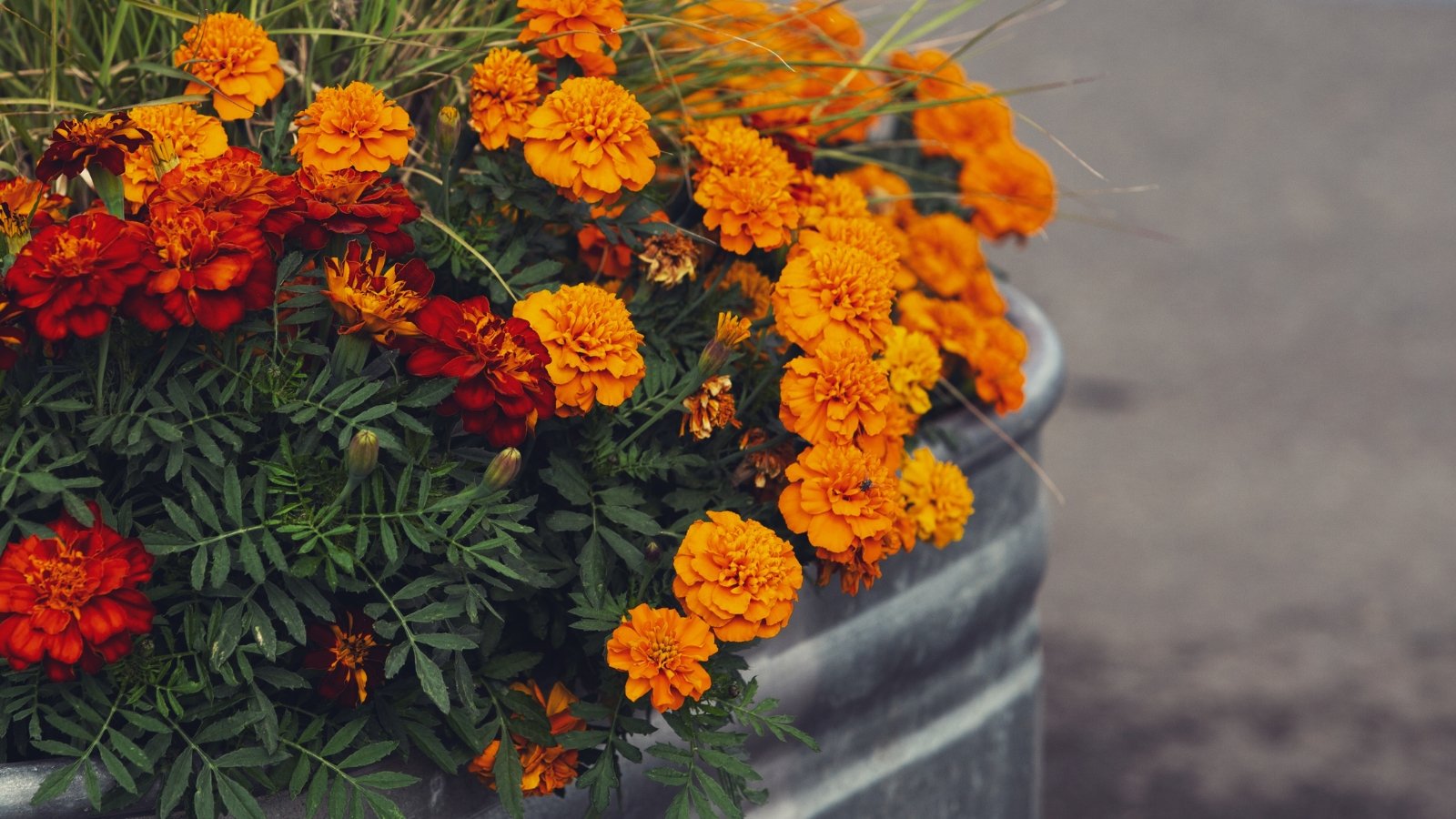
Marigolds make famously good neighbors with their insect repelling characteristics. They also don’t mind a high humidity situation, and they make excellent container plants. Marigolds are happy in full sun or partial shade. In hotter climates, I find they prefer a bit of afternoon shade. In too much hot sun the flowers will die faster, but the foliage is not usually affected.
These flowering plants are drought tolerant, but again, their flowers will last longer if you water them regularly. Deadhead your marigolds to make them produce lots of cheery, warm-toned flowers. I’m partial to the small French marigold because of the colors, but all types produce lovely flowers.
Tomatoes
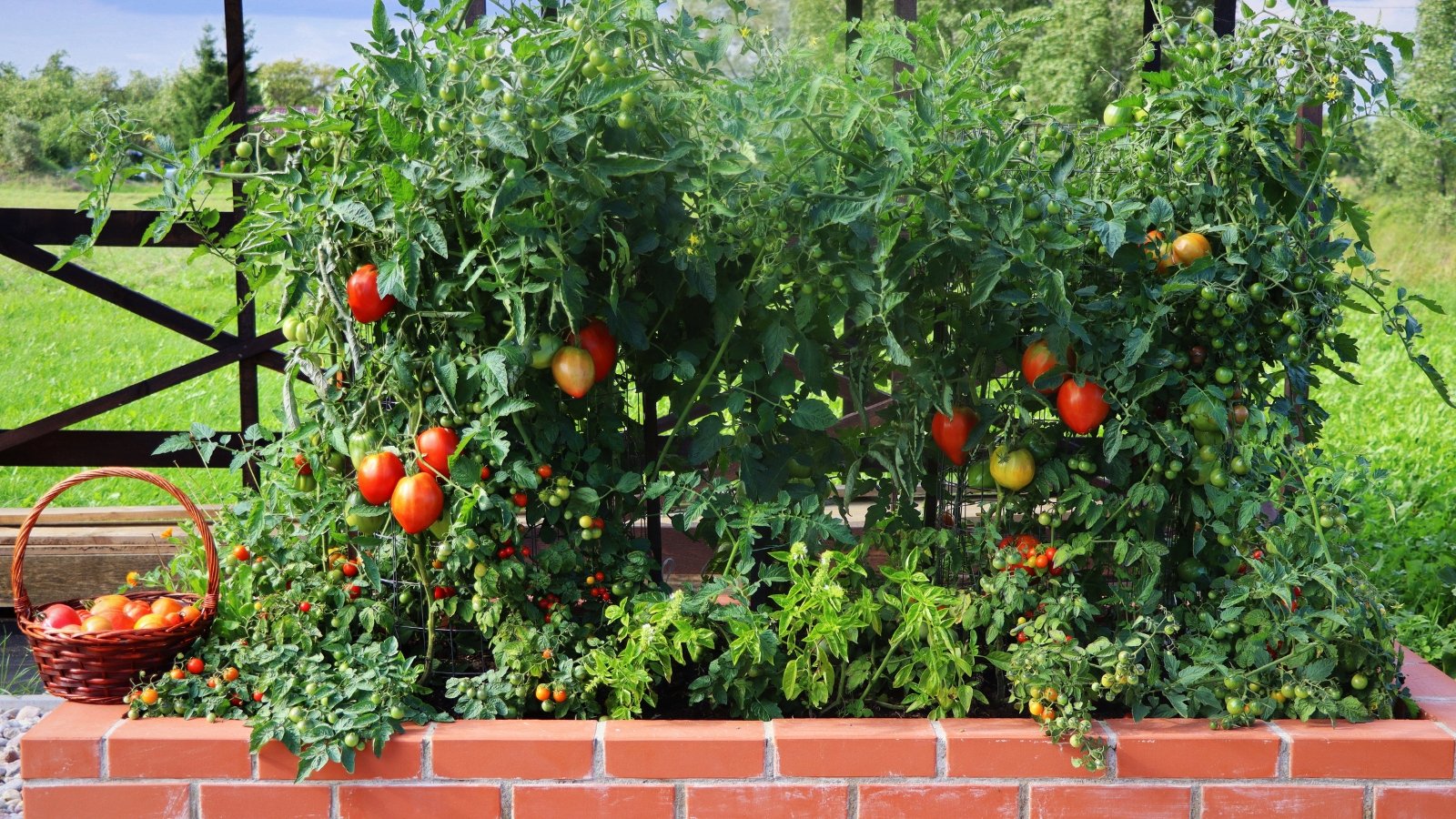
Another vegetable that works well in raised beds and happily tolerates high humidity is tomatoes. The ideal daytime humidity for tomatoes is 80-90%, so if you’re in a hot, humid climate, you can grow a ton of them! These veggies are heavy feeders. Make sure to work plenty of compost and fertilizer into the soil before planting them.
Plant your tomatoes with basil for exceptional flavor. Marigolds will help to keep the flying insects away. To avoid fungal diseases, thin out the bottom branches and leaves in the center and around the bottom of the plant.
Purple Coneflower
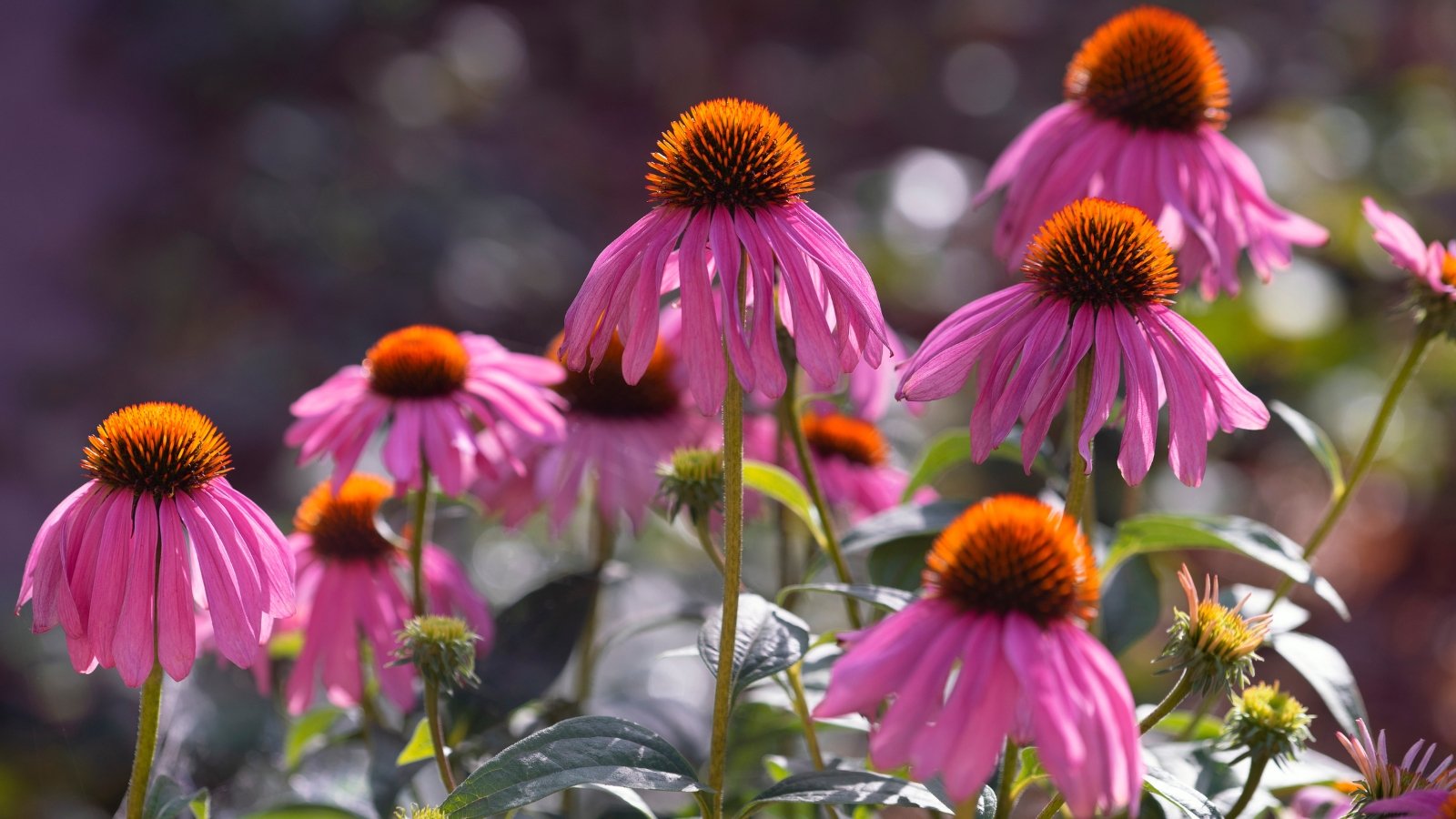
Purple coneflower is a very tolerant and resilient plant. It handles heat, humidity, drought, and poor soil very well. This long-lived perennial is a favorite among pollinators, drawing bees and butterflies to the garden. Let them go to seed, and your beds will fill up quickly with these fun and extra sturdy plants.
You can plant these flowering plants in full sun or partial shade. They aren’t picky about soil, but drainage is important, especially in high-humidity climates. The blooms are long-lived and make excellent cut flowers. Deadhead to reduce spreading, or leave the seed heads for birds to eat in the fall.
Yarrow
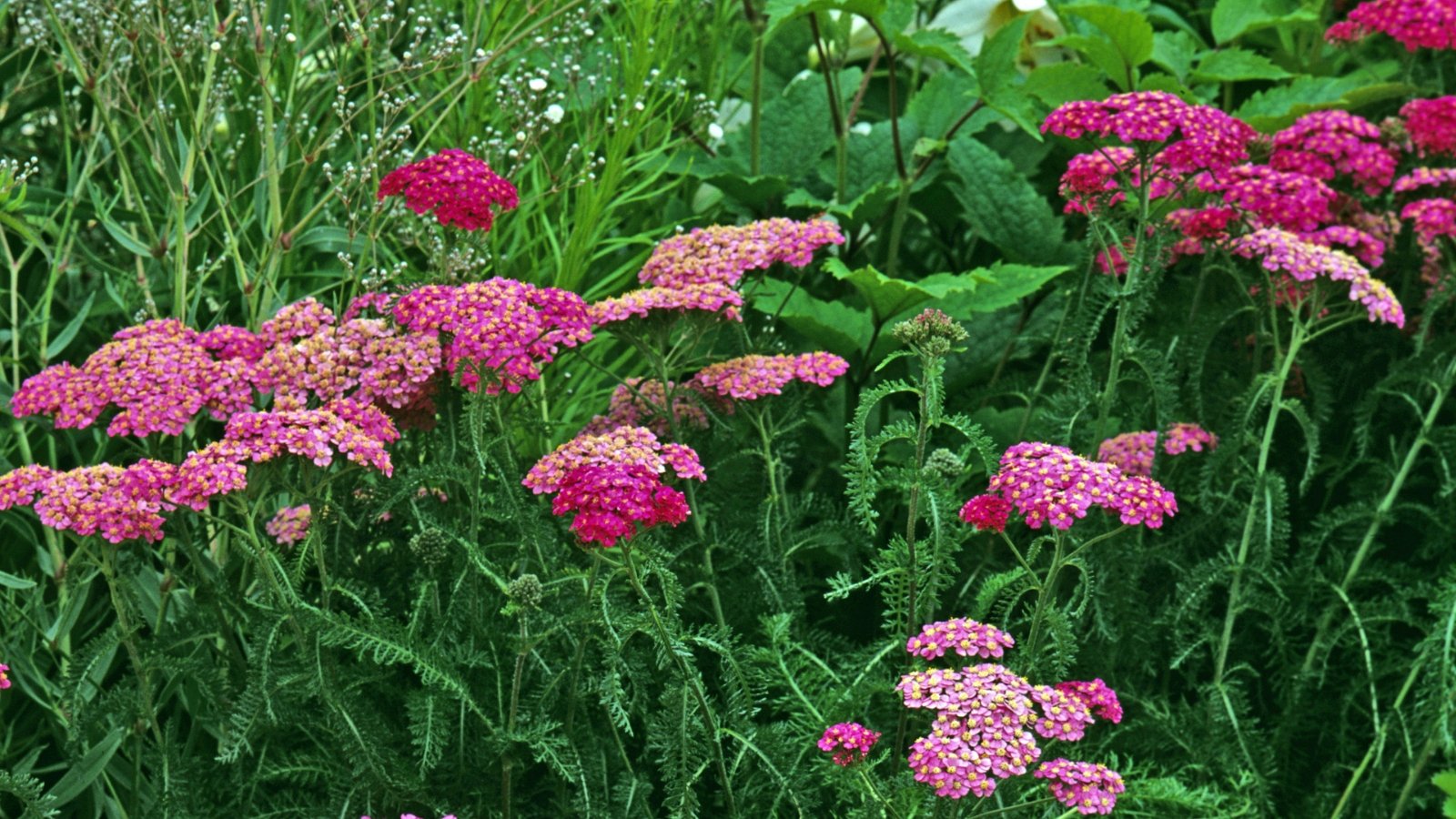
Yarrow is another favorite of mine for the raised bed cutting garden. The flowers give a sweet, vintage vibe to floral arrangements. Their fern-like foliage adds texture and interest to mixed beds, and they are incredible bloomers. They are reliable perennials and tolerate a lot of heat and drought.
While yarrow does tend to prefer dry weather, it is highly tolerant of humidity. Water at the soil level to prevent powdery mildew, and thin out your plants now and then to maintain air circulation. Butterflies love this plant, and will visit them often, especially the red varieties.
African Blue Basil
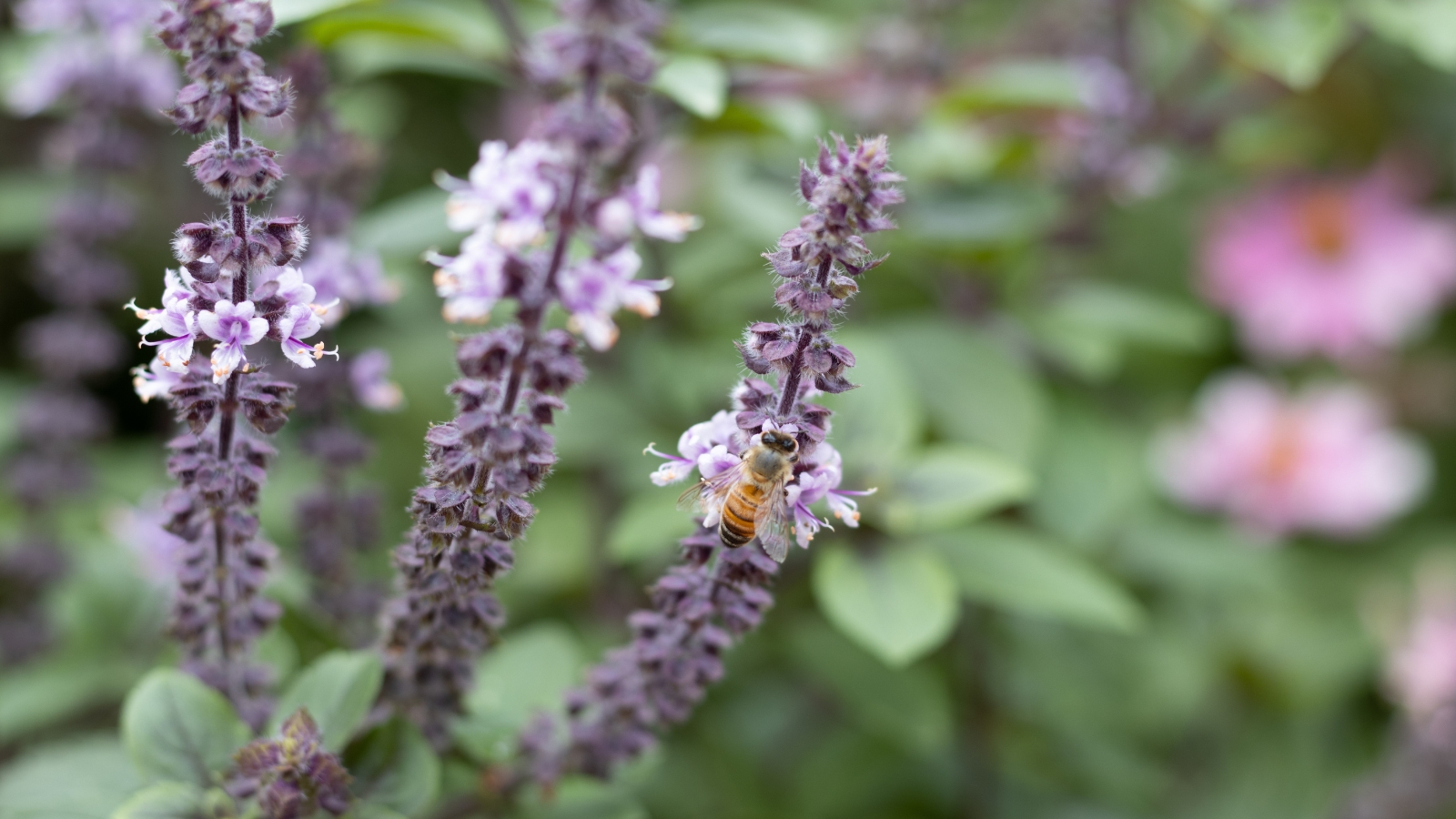
While it doesn’t require it, African blue basil tolerates humidity very well. It’s also much more cold-tolerant than most sources would have us believe. I know because I have several plants, and they survive periods of temperatures around 20°F (-7°C) every year here in Zone 9. This incredibly sturdy and resilient plant is a pollinator favorite, and it reliably blooms from early summer until the first freeze.
African blue basil isn’t the most appealing variety if you like to cook with it. Although, it does make a nice pesto. I plant it because it seems indestructible, is highly pest resistant, and drought resistant, too. Bumblebees will visit the garden daily for this fragrant treat.
Lantana
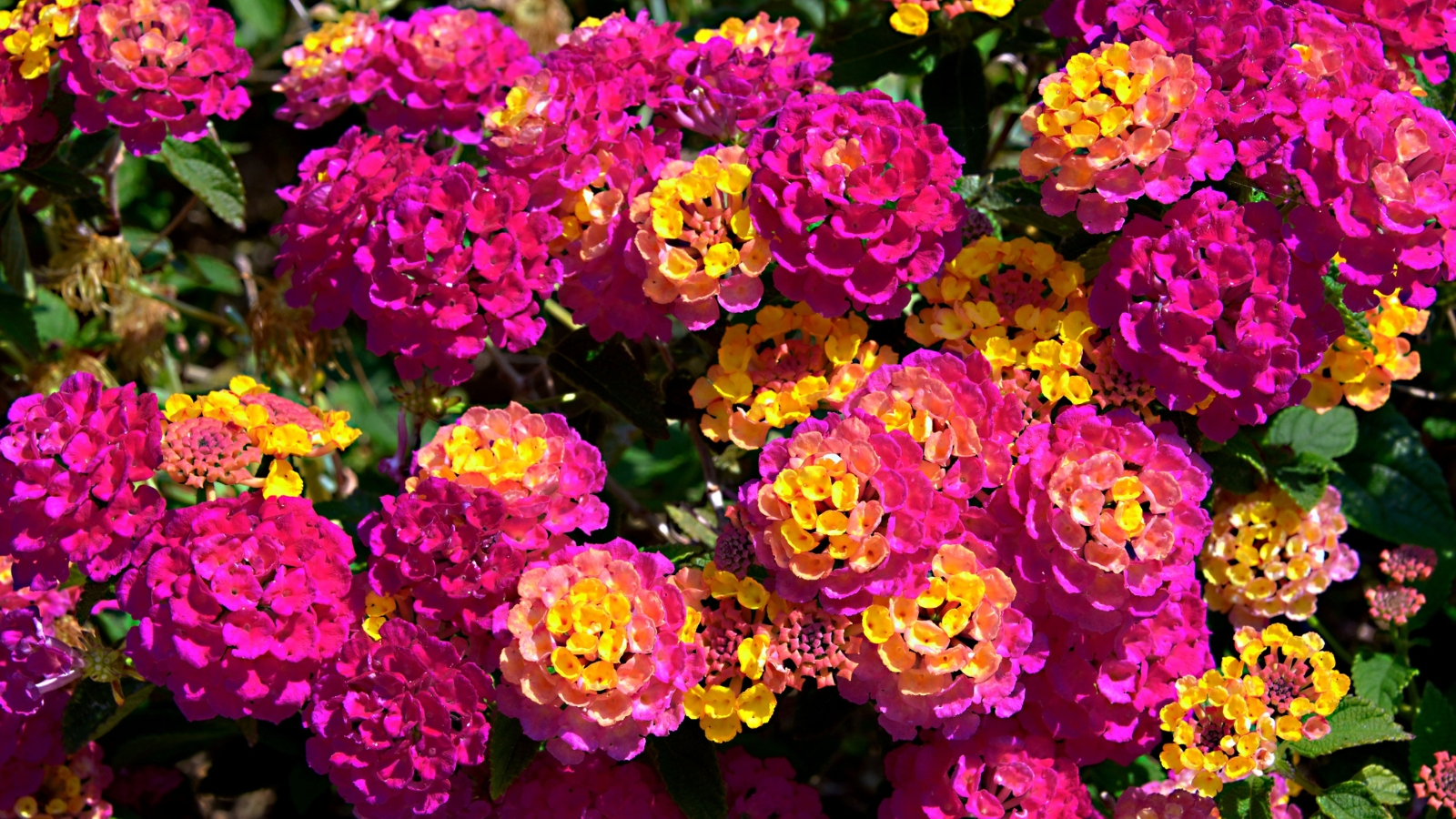
Lantana is not specifically indicated for humid climates, but it doesn’t mind the moisture. The structure of the plant is open, keeping good air flow through the interior. This attractive plant flowers for a long season, and is a host plant for several butterfly species. It loves lots of sunshine and is incredibly drought-tolerant.
This plant can be aggressive if it likes where you plant it. It can overtake other, less aggressive plants if you don’t keep it pruned. It takes well to pruning, though, and you can cut it all the way back mid-summer. It will grow back to its full size in a matter of two months. The brightly colored flowers are attractive and cheerful. There are shrub and trailing varieties available.
Begonias
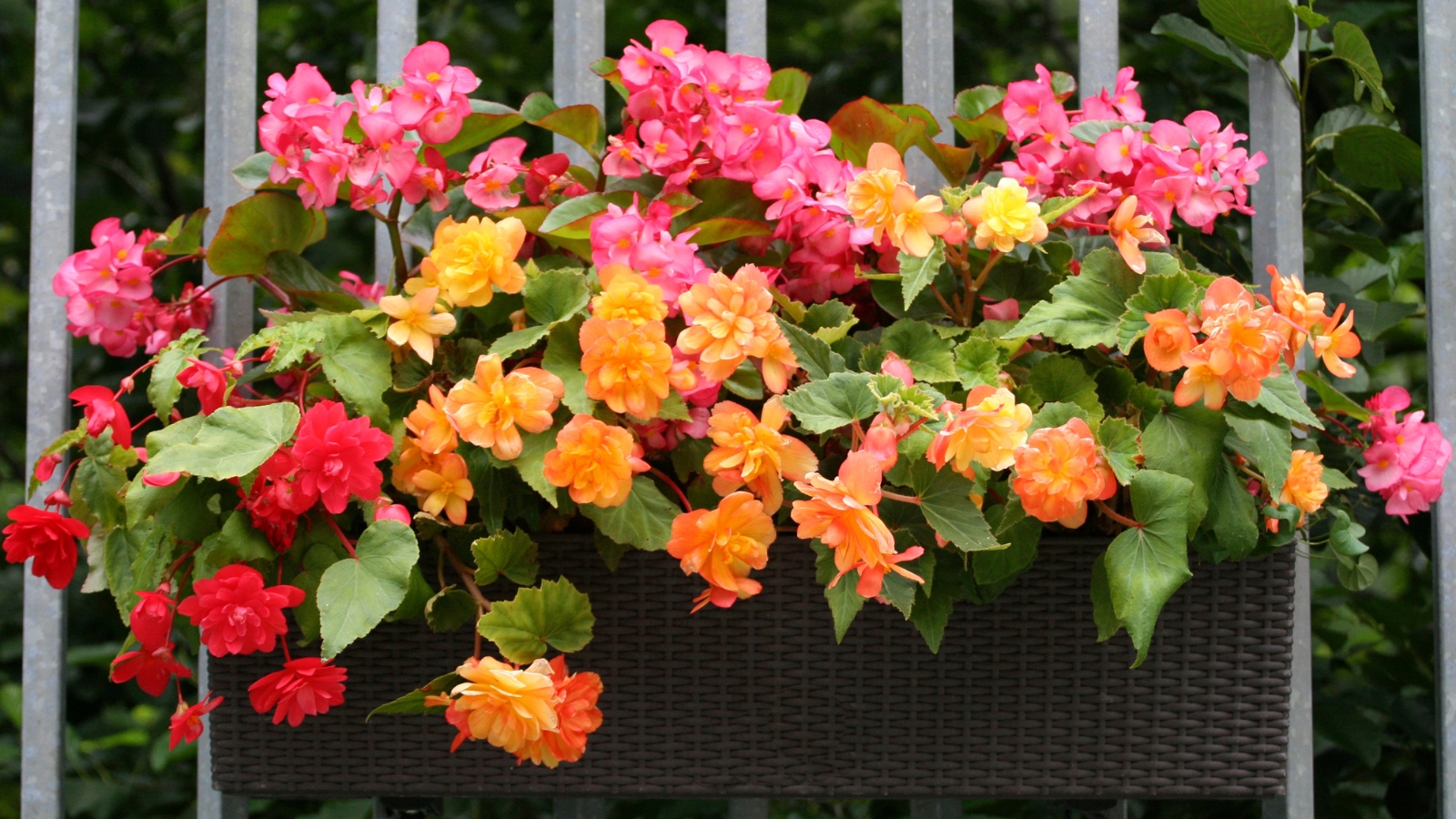
Many people think of begonias as houseplants, and they do make nice houseplants as long as they get enough humidity. Rex begonias, in particular, like a lot of moisture in the air to maintain their beautiful foliage. If you want these plants to thrive and produce flowers, humidity is key. While specific needs vary by species, nearly all begonias are tolerant of high humidity. Up to 90% is well tolerated by most.
In warm climates, begonias will be happiest in partial shade. In cooler climates where these plants grow as annuals, they will tolerate full sun exposure. Begonias prefer to be slightly root-bound, so they thrive in containers of all types. Keep the soil moist but well-drained.
Coleus
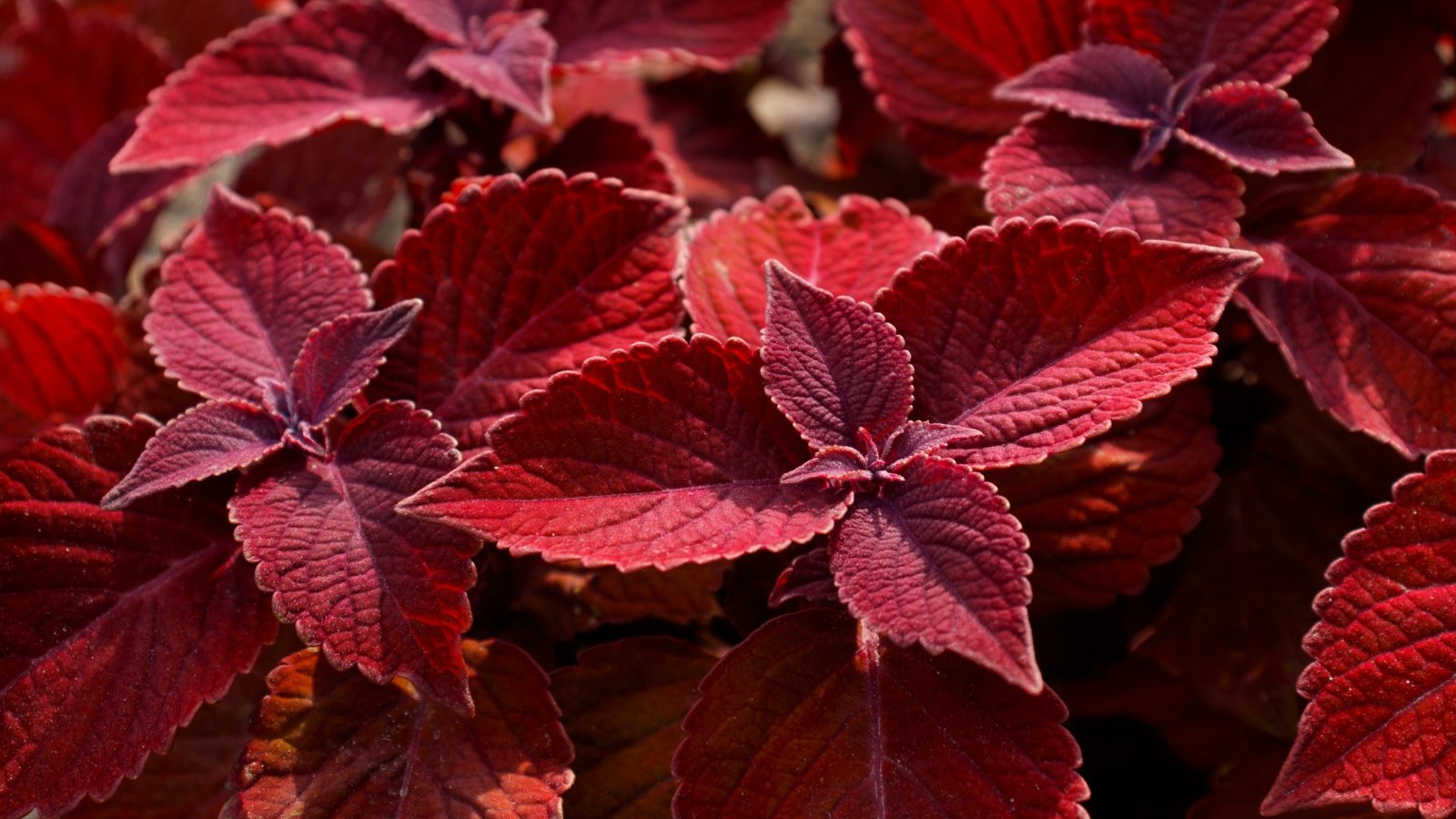
For bold color and decorative foliage in your raised beds, coleus can’t be beat. This tropical plant comes in a wide range of patterns, typically in shades of red and green. It produces an inflorescence with small white or purple flowers and commonly re-seeds itself. Like most tropical plants, it not only tolerates but prefers high humidity.
Coleus has good resistance to pests and diseases. If you pinch the plants when they are young, they will branch nicely and grow into a shrub like shape. They like moist, fertile, well drained soil, making them an excellent raised bed plant. Let the soil dry on top between waterings to help prevent fungal diseases. There are types of coleus that like full sun and others that prefer partial shade. Be sure to find the right type for your exposure.
Calla Lily
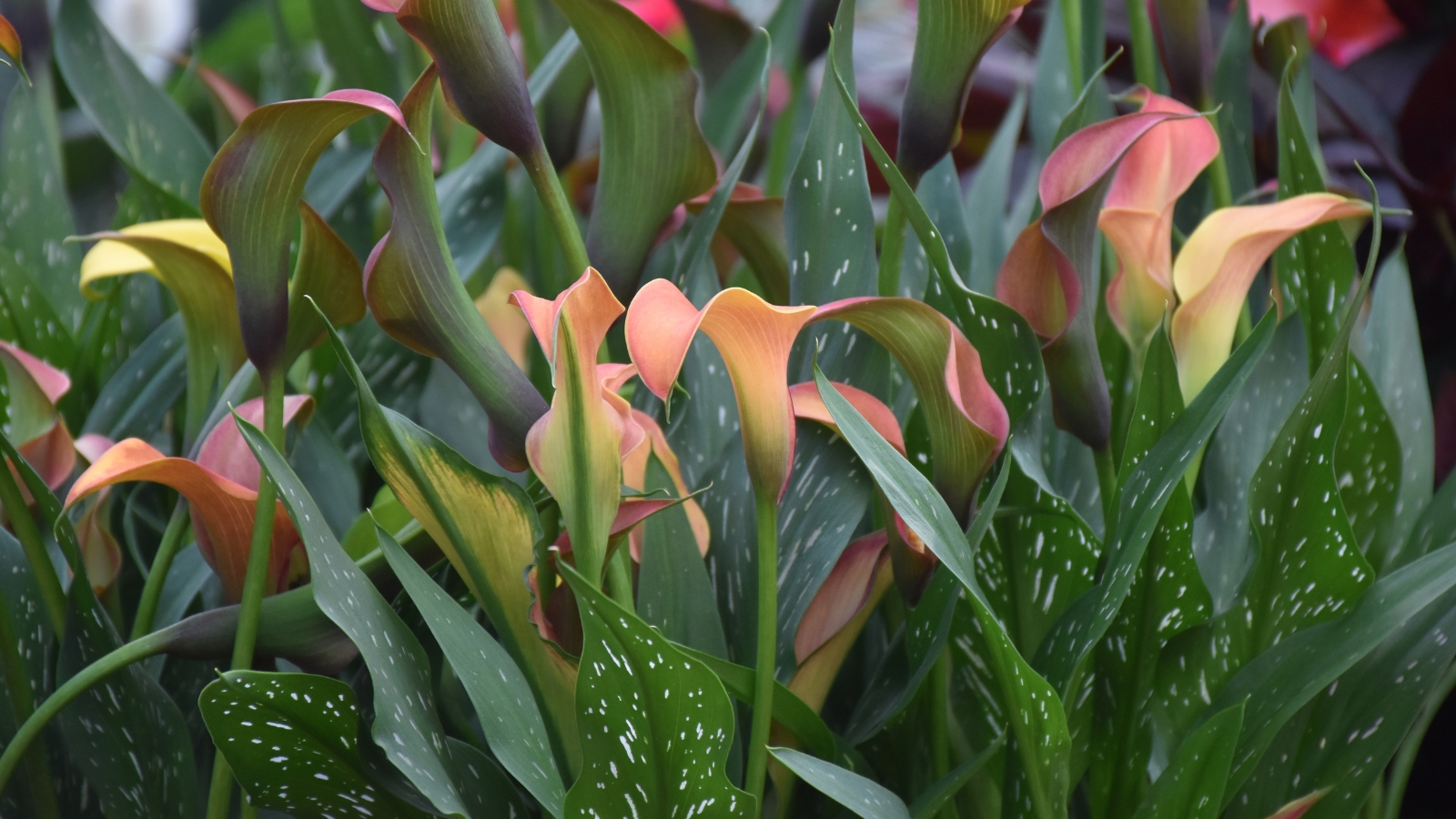
Calla lilies are stunning plants that grow from tubers and produce interesting foliage and flowers. You’ve certainly seen these flowers in grocery stores or florist shops, as they are extremely popular in floristry. They are a favorite wedding flower for their elegant shape and ability to last a long time in cut arrangements without water.
Callas like high humidity, but be careful about overwatering these plants. Their tubers are susceptible to root rot if you keep them moist all the time. These plants prefer rich, moist, but well-drained soil. Let the top of the soil dry between waterings and cut the flowers often for repeat blooms.
Cardinal Flower
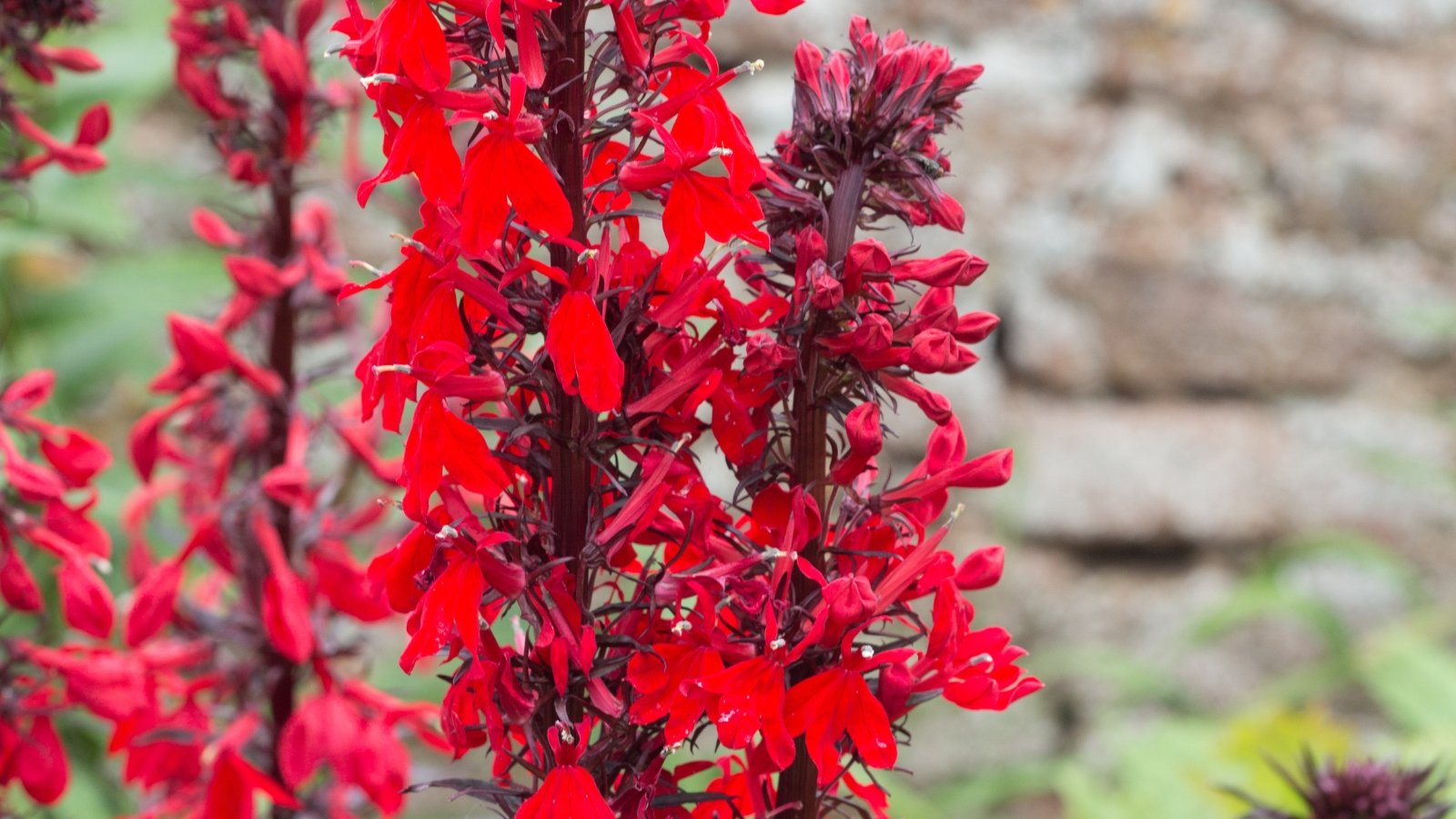
Cardinal flower is a beautiful plant that thrives in moist conditions. It likes evenly moist soil and tolerates humidity very well. You can even find these plants growing in swampy areas. However, they are versatile and don’t require high humidity, so a dry spell won’t damage their leaves as long as you keep the soil moist.
This plant has excellent cold tolerance, as well, and can tolerate temperatures down to -34°F (-37°C). In colder climates, protect the roots in winter with a heavy helping of mulch. Cardinal flower isn’t a common container plant, but under the right circumstances they will grow well in raised beds. They are beautiful and dramatic additions to the landscape. Avoid deadheading or pruning until the spring.
Rudbeckia
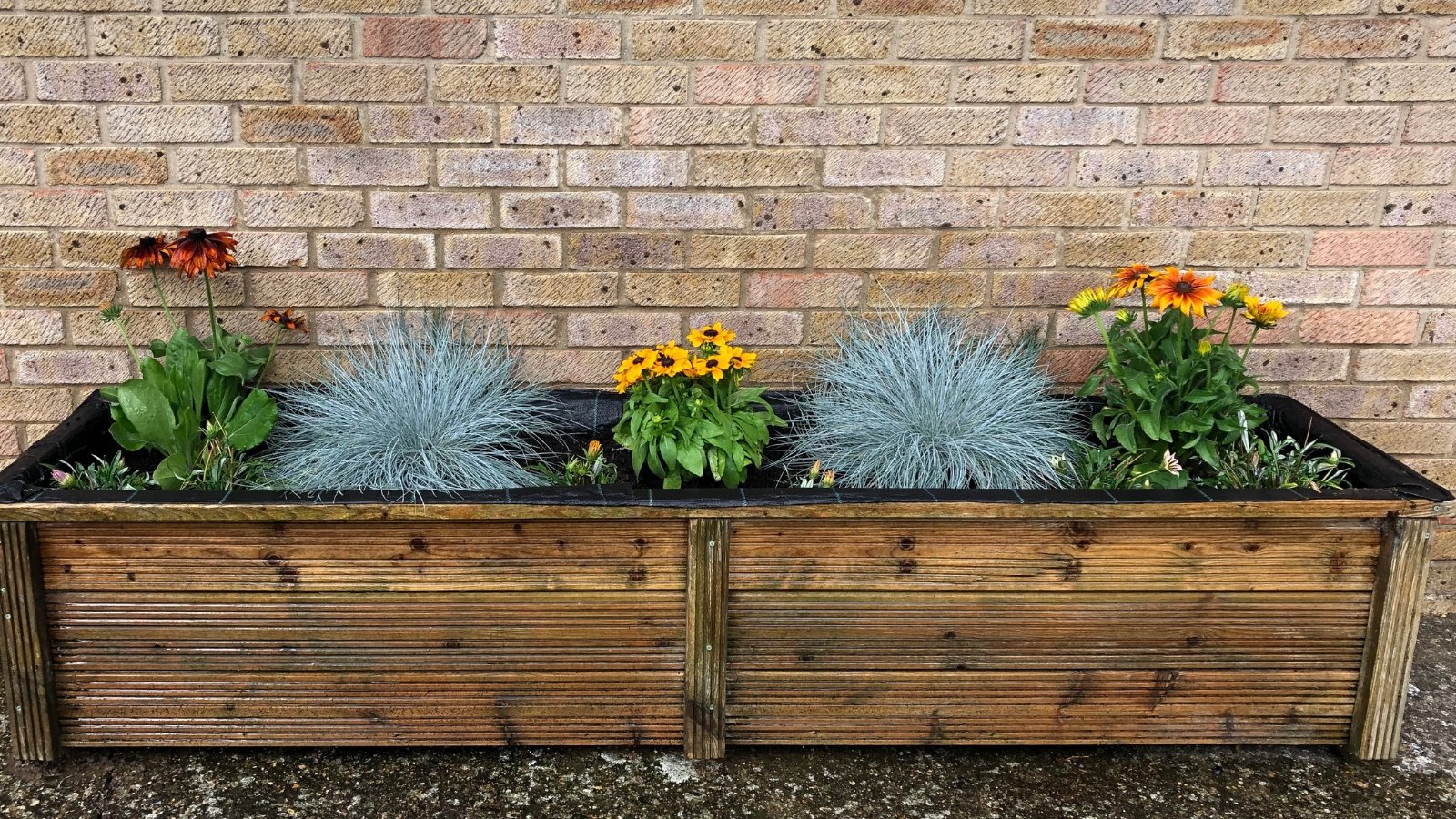
You might know this plant by its most famous variety, black-eyed Susan. These exceptionally resilient plants can grow just about anywhere and are very drought-tolerant. They grow happily in hot, humid climates, but they tolerate cool climates, as well. While they don’t mind humidity, it’s best to keep them thinned out near the ground and in the interior of the plant to avoid fungal diseases.
Rudbeckia is not picky about soil. It will grow nicely in loam, sand, and clay and tolerates moist or dry soil types. Avoid watering from the top to keep excess moisture off of the leaves in humid climates. Rudbeckia maxima is an excellent choice for humid climates.
Final Thoughts
All of these plants will enjoy growing in your raised beds in a humid climate. Avoid fungal issues by maintaining proper airflow around your plants, and water the soil rather than the foliage in this type of climate. The moisture in the air will keep your foliage looking tip-top. The added drainage of a raised bed will help keep away fungus, as well.




